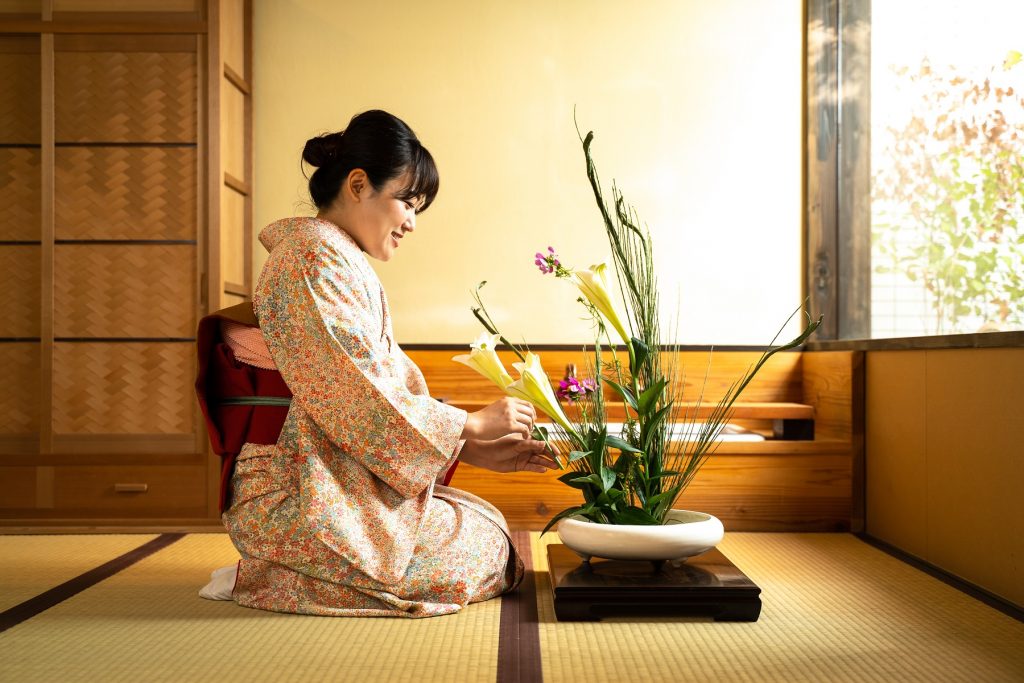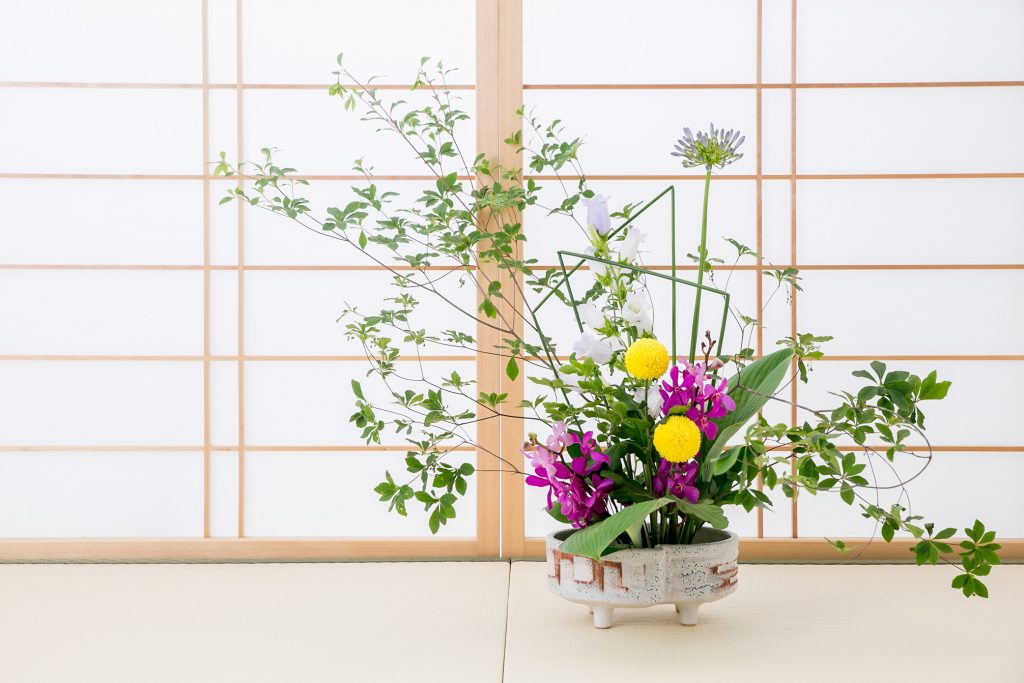Japanese flower arranging, or Ikebana, has come a long way from its humble roots as temple offerings centuries ago. Today it is a popular and innovative living art, unique to Japan, that is cherished by both experts and novices.
In this article, we will discuss the origins of Ikebana, and includes some of the arrangements and techniques that you will need to create your own floral art.
What is Ikebana?

Ikebana (生花) means living flowers. The Japanese art of flower arranging has been described as being at once more subtle, more sensitive, and more sophisticated than the methods of arranging flowers usually employed in other cultures. This is so because Ikebana is an art in Japan in the same sense that painting and sculpture are arts elsewhere.
Where does Ikebana come from?
Simple floral arrangements were made as early as the 7th century when Buddhism was introduced to Japan from China. It was the custom to place flowers before images of the Buddha, and over the centuries these floral offerings acquired a fairly elaborate form.
During Heian times (8th to 12th centuries) it was a common custom to send poetry attached to a flowering branch as an expression of admiration and sentiment.
With the ascendency of the samurai class from the 14th century, feudal lords gained stature and supremacy, and they wished to display their wealth and power. The first tokonoma, or alcoves, were built in their homes and palaces no doubt to display suits of armour, but once the unification of the nation was established and peaceful times arrived, art objects, including flower arrangements, began to be displayed.
Ikebana Arrangements & Styles
1) Rikka
The early Buddhist floral decorations were intended to symbolize the idealized beauty of paradise, and as a result they were generally both ornate and sumptuous. The same attributes were preserved in Rikka – the first Ikebana style – which aimed not so much at revealing the beauty of flowers as at using flowers to embody an elevated concept of the cosmos.
Rikka’s structural rules – called positions – guide the basic composition of the style. The nine key positions were developed by the Buddhist monks, who incorporated Buddhist teachings into their flower arrangements.
Ikebana is a visual art that uses plant materials that come in a wide variety of forms. Depending on the materials, artistic judgment must be used to readjust the established forms. In the Rikka style, it is essential that the nine positions be honoured; but doing so, with the understand that within this structure there is room for personal expression, is the secret to Rikka.
2) Seika
In contrast to the formality of Rikka’s strict Ikebana rules, other freer ways of arranging flowers were known as Nageire simply meaning thrown in. The distinctive feature of the Nageire arrangement was that the flowers were not made to stand erect by artificial means, but were allowed to rest in the vase naturally.
It is by no means accidental that the Rikka style is associated with the more traditional forms of Buddhism, while the Nageire style is associated with Zen, for Rikka arrangements grew from a philosophic attempt to conceive an organized universe, while Nageire arrangements represent an attempt to achieve immediate oneness with the universe.
By the end of the eighteenth century the interplay between Rikka and Nageire gave rise to a new type of flower arrangement called Seika, which literally means fresh-living flowers. In the Seika style, three of the original positions were retained: shin, soe, and uke (although now known as taisaki), creating an uneven triangle.
In a Seika arrangement, which is placed in the tokonoma alcove, the active empty space both within the arrangement and within the frame of the tokonoma are vitally important.
Basic Ikebana Techniques

Ikebana can be translated as living flowers and, as with all living things, each type of plant has its own set of characteristics. The major characteristic that we concern ourselves with is whether a plant’s stem or branch is brittle or supple.
How to use heat to bend a branch
Many types of evergreens have heavy sap, which becomes soft when heated and hard again when cooled. Place the part of the branch you wish to bend over the candle flame, while gently bending it to the desired angle, then immediately plunge the heated section into cold water until completely cool. Always remember to hide burn marks from the viewer’s sight.
How to use scissors to create a sharply bent angle
Some branches such as maple or flowering plum cannot be sharply bent and will simply break in two. To make a sharp bend with these materials, use scissors to make a cut that is one-half the diameter of the branch, and gently open the break so that the upper bark overlaps. A series of these gentle bends will create the required angle.
How to use wire supports
Hollow-stemmed flowers can be easily straightened with thin wire, simply push the wire gently up from the bottom of the stem.
How to use kenzan
The oasis that Western florists use is not recommended for Ikebana because the foam does not allow the angles of the plants to be readjusted. Most kenzan are cast with brass needles on a lead base, for weight. It is important to wash and rinse kenzan well after each use to keep them in good condition.
Cut the base of the flower stem at an angle, which makes it easier to insert and stabilize the branch.
For thicker branch stalks, cut a portion away to make the bottom of the branch thinner. Use both hands to push the branch forcibly onto the kenzan needles.










